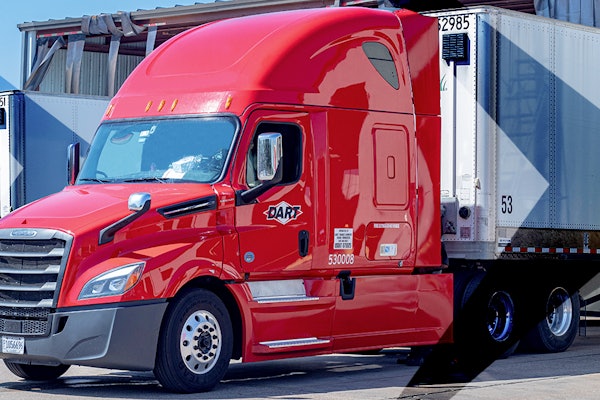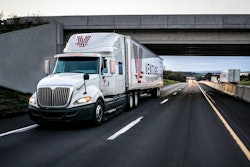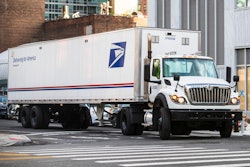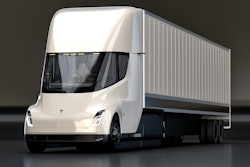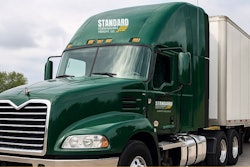In general, in-house maintenance of vehicles has the potential to be more cost effective than vendor maintenance. That’s because we have the opportunity to closely manage our resources. Manpower, parts, facilities, and scheduled and unscheduled activities are normally controlled better by us because we know our fleet environment. We also can adjust quicker to changing environments, i.e., weather, fleet mix, and density needs resulting from vehicle-demand changes.
Scheduled activity is more efficient than unscheduled activity. We know from experience the time required to repair. We stock the replacement parts. Travel times are reduced. Cores are saved and, as a result, provide a cost-effective life cycle for the rebuilt part and/or vehicle.
Also, we measure our costs. When we initiate change, we measure its effectiveness in cost reductions. When we perform component life-cycle analysis, overall costs are lowered. This is because we can replace parts prior to their failure, decreasing unscheduled activity.
Why outsource at all?
While in-house maintenance and repair may be ideal, there are, realistically, some activities and tasks we do not address on a frequent basis. As a result, our shops lack the tools and equipment to perform these tasks. Our efficiency suffers when we perform these tasks without proper tools and experienced people. But the option of upgrading equipment in these areas depends on our capital expenditure program.
Specific examples of jobs we might not address frequently:
The following are other examples of jobs we might not address because of our lack of technology, understanding, skills, and shop equipment:
The trick is to balance day-to-day vehicle repair needs with overtime and vendor service for peak activity and cost control. This allows our own staff to meet the majority of our needs as our fleet ages, changes density or mix, or remains stable.
Staffing and supervision
Staff size is a function of direct labor, which is the actual time spent repairing a vehicle. Each person performing direct labor carries a proportional amount of indirect labor cost-vacation, sick leave, wash up, and coffee breaks.
Our principal resource to manage direct labor is our first-line supervisors. Their main function is to motivate average people to do above average work, continuously and consistently.
The first-line supervisor must define our expectations to their staff and prioritize the work, curtailing any unnecessary work and focusing manpower on the necessary work.
The first-line supervisor, in defining our expectations, must set standards to finish work in an acceptable time. Reasonable standards can be set and realized through the identification of repeat tasks, control of mechanic turnover, purchase of power tools, knowledge of technology developments, and staff training. Performance must grow continuously.
More direct labor and productivity must be realized from each employee annually through proper supervision. If we cannot supervise the shop formally, the informal system takes over. And if we don’t delineate our expectations to each employee, then their expectations will be realized. These are usually less than what we expect.
A measurement of our shops’ productivity is our mechanics’ performance compared to work standards. If our estimated work standards are met or exceeded, we are productive. If they are not met, then we fall short of our productivity goals.
Looking at our shops’ performance, we need to set and measure some standards on repeated high-frequency tasks. If we can’t meet these standards, we must improve-or it’s time to go outside for productivity gains.
Apply same principles to outsourcing
In general, if the first-line supervisor defines task time frames, measures each mechanic against these standards, communicates each person’s performance, and provides a get-better environment, then there is control. This is proper staff supervision.
If some or all of the above are missing, we do not have control. If that is the case, we have three alternatives:
At this point, No. 3 might be the best option. Whether we pay by time and materials, by the job, or by a daily workload for each vendor person, we have an opportunity to set achievable standards for vendor performance and a shot at getting productivity goals met. And, with the vendor alternative, we can devote our supervisors’ time to verifying invoices instead of supervising staff.
Gains are measured against time-estimate standards set at a meeting with the vendor. But if the vendor does not meet these times, then they should not get paid for the excess time. In other words, the vendor must absorb the averages. But they also benefit from underages that we accept.
I’ve illustrated some work standards that relate to high-frequency occurrences and their time frames. Let’s define the measurement terms so we can compare an actual, random fleet’s present performance to a vendor’s performance (see tables):
Vendor is the task time performed by a vendor’s staff-time and materials or by the job.
Standard is the acceptable time we estimated for our staff to perform the task properly.
Average is the average historical performance of our staff for that task.
Sample size is the number of tasks recorded for that event by our staff.
Tables 1 and 2 present a random fleet’s experiences with vendor and in-house maintenance; Table 3 tabulates the experience in a comparative format.
This fleet averaged a 14 % better experience with the vendor compared to the in-housed standards. An average of 18 % better experience over in-house average performance is to be gained by this fleet by using a vendor.
This program is estimated to focus on a saving on 5 % of the activities that this fleet performs, which, through repetition, makes up 30 % of the work.
Using 100,000 hours of present workforce, we can estimate the following savings:
By using a vendor to do a percentage of our work, we realize a significant gain in productivity. But we should not use the vendor for all our work. We need a staff for preventative maintenance inspections and to fix day-to-day driver write-up items, e.g., light bulbs, flats, out of fuel, etc.
The preceding example does not include manpower savings resulting from a reduction in workforce. The vendor work reduces this fleet’s work by 5,400 hours. To determine the number of people to be reduced for this fleet, we would use 1,500 hours per year direct labor per person as a guide, which equals 3.6. At $40,000 per year per person, that equals $144,000 per year.
The total, estimated saving, then, would be $216,000 plus $144,000, or $360,000 per year.
Prioritize work
It’s important to determine daily at each shift’s beginning:
Many fleet managers and maintenance supervisors are getting by today with a reduced staff, because of cost cutting and staff attrition, which means our present workforce must do more with fewer people.
The major repair problems are generally handled first by our staff, then the minor ones are taken care of during whatever hours remain. However, this can create a problem. An effective preventive maintenance program is vital to a reduction of downtime. But PM might have a low priority due to daily unscheduled activity.
Clean vehicles may have become a thing of the past. If you ever do get caught up, the cost of an underutilized staff has to be justified on the basis that they will be needed in a near future activity. This is a weak justification, and the possibility of layoffs is not conducive to productivity. It is not surprising that, when jobs take longer to complete, everyone is kept busy, and it looks like present staff levels are appropriate. Many times, easy jobs are extended because the supervisor did not say NO! It’s our job to prioritize necessary work and curtail unnecessary work.
Keep your balance
During peak periods, vendors can be used for vehicle maintenance and repair. The labor cost for such work will run from $40 to $50 per hour, based on industry averages.
But the danger in falling back on vendors is the lack of incentive to increase internal productivity. Our remaining in-house people might continue to over-extend their times, allowing the vendor’s work to grow.
What it comes down to, again, is that we need to supervise our internal people. The best way to do that is to watch, pay attention, and measure.
Even while using vendor maintenance for support, key internal personnel can still be kept and supplemented with vendor personnel. As volume increases or as specific job categories cannot be met by in-house personnel, a call to a fleet maintenance support service can provide qualified people as needed. As schedules return to normal, you reduce the number of vendor support personnel until you are back to the original internal staff. This maximizes your staff’s application for peaks without creating the morale problem of a reduction in force.
In addition to repair and maintenance personnel, the vendor support service should provide:
A number of fleets, such as telephone companies, private companies, utilities and municipalities, commonly use maintenance support services for light and medium-duty vehicles. In general, they have experienced better control of costs and manpower utilization without impacting flexibility.
Their ability to increase or decrease the number of maintenance and repair personnel easily without short-term hiring or layoffs has proven to be a distinct benefit-economically and psychologically. An optimal internal staff complement is established and maintained.
However, utilization of a large, professional, fleet service support organization may not be practical for every application. For example, large fleets with small numbers of vehicles at scattered locations might be serviced better by a local repair vendor.
I believe we can maintain our fleets ourselves more economically than an outsider if we have control. But changing environments require flexibility.
The key to a successful relationship in this service environment is the team concept. Each member of the team-the company’s fleet management, the fleet maintenance support service, and the vehicle users-must be committed to the same objectives, providing high vehicle availability through a quality, cost-effective vehicle service program and safe vehicles that are available for work every day.
You can delegate the work to an outsource vendor but you cannot delegate the responsibility.
About the author
John E. Dolce is an active fleet manager and consultant with over 30 years of experience in car, truck, transit, mining, and equipment maintenance and operations.
His background includes experience with public and private fleets from 100 to 18,000 vehicles with 24-hour, 7-day multi-shop and multi-state operating locations.
Mr. Dolce is the author of Fleet Management published by McGraw Hill and Analytical Vehicle Maintenance Management published by the Society of Automotive Engineers (SAE). He currently teaches seminars in fleet management nationally and internationally for the National Private Truck Council, George Washington University, the University of Washington at Seattle, and SAE.
He is an active member of the SAE, and has been a keynote speaker at national and local meetings of many fleet organizations.

